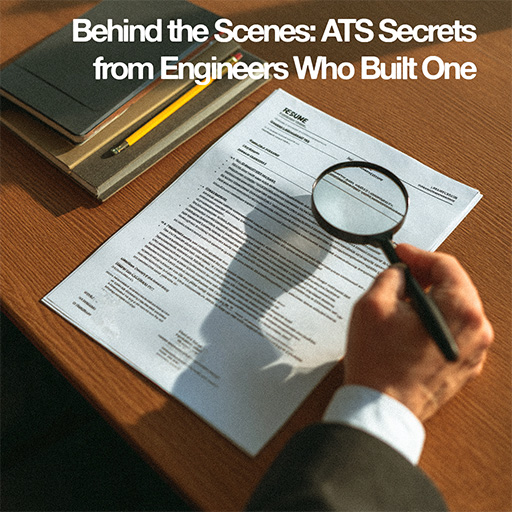
CAREER DEVELOPMENT & PROFESSIONAL GROWTH
Behind the Scenes: ATS Secrets from Engineers Who Built One
Most job seekers have no idea what actually happens once they click ‘Apply’. At Ascentis Labs, we do—because we’ve literally built the systems recruiters rely on to parse and filter resumes. Here’s what we’ve learned from building an Applicant Tracking System (ATS), and what you absolutely must know to ensure your resume doesn’t vanish into digital oblivion.
What ATS Actually Does (and Doesn’t Do)
Contrary to popular belief, ATS systems do not “read” your resume in the traditional sense. Instead, they parse your resume into structured data fields (like experience, education, skills, and contact information). Resumes aren’t ranked inherently—they’re filtered by matching specific keywords, phrases, and skills. Additionally, formatting like graphics, elaborate columns, or even certain PDFs can severely disrupt this parsing process, making even well-qualified applicants invisible to recruiters.
Common Resume Parsing Failures
Here are the most common pitfalls that cause resumes to fail ATS parsing:
- Headers as Images: Using images for your name or contact details prevents the ATS from identifying who you are.
- Two-Column Layouts: While aesthetically pleasing, two-column designs often confuse the ATS, mixing content from different sections incorrectly.
- Fancy Templates: Decorative borders, unique icons, and elaborate designs usually hurt rather than help, causing critical parsing errors.
- Unusual Section Labels: ATS systems typically expect standardized section headings such as “Work Experience” and “Education.” Deviating too far (e.g., using “Career Journey” or “Professional Highlights”) can lead to content being overlooked entirely.
Keyword Logic & ‘Code Words’ from Job Posts
ATS parsing heavily relies on keyword matching. Here’s what you need to know:
- Matching exact phrasing from the job description isn’t just recommended—it’s required.
- ATS software extracts skills and qualifications categorized as either “required” or “preferred.” If your resume lacks these exact terms, it risks being automatically filtered out.
- Synonyms and variations of words are not reliably recognized. For instance, if a job description explicitly states “project management,” don’t rely solely on terms like “project coordination.”
Our Approach (and Why It Works)
Having built an ATS from scratch, we employ a unique and powerful strategy to create resumes that perform exceptionally well in these automated environments:
- Reverse-Engineering Job Posts: We analyze and identify exact keywords and phrases recruiters embed in job descriptions, ensuring your resume meets the exact match criteria.
- Parser-Proof Design: We structure your resume carefully, ensuring that critical information is parsed accurately without sacrificing readability for human recruiters.
- Strategic Formatting: Every stylistic choice on your resume has a strategic purpose, balancing aesthetics with the strict functional requirements of ATS software.
Why It Matters
If your resume doesn’t parse correctly, you effectively disappear from the applicant pool. At Ascentis Labs, our firsthand experience in building ATS systems ensures your resume isn’t just seen—it stands out and gets shortlisted.
We built the backend. That’s why we can confidently say we know exactly how to get you to the front.
Need a resume that passes the filters and gets real results? Explore our Resume Services and let us craft a resume that’s built for humans and machines.
